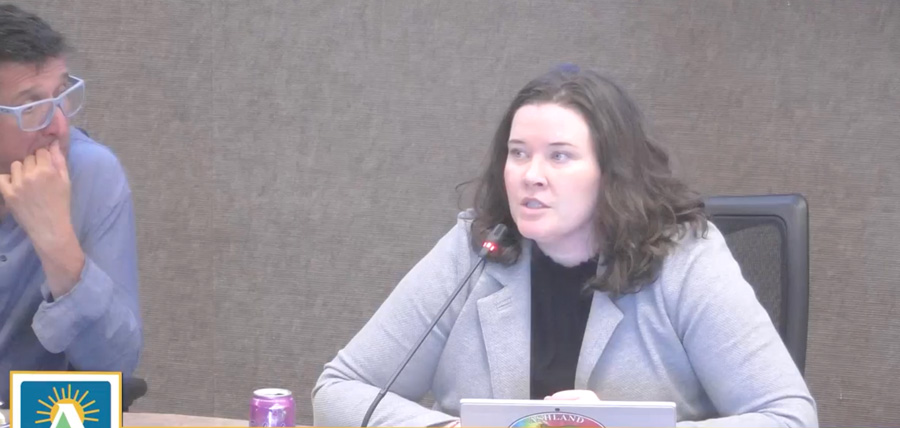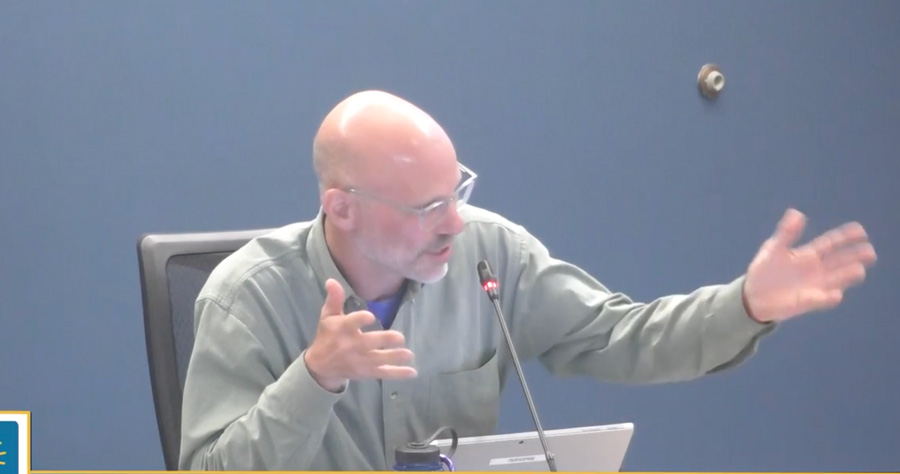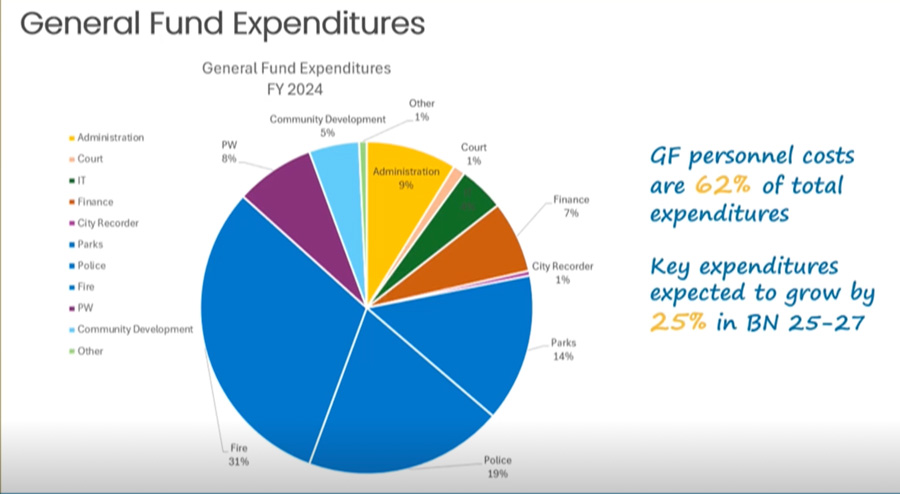Increase in low income assistance program considered due to utility rate increases
By Morgan Rothborne, Ashland.news
Ashland City Council reviewed the city’s sources of revenue alongside costs and potential changes to its low income assistance program during its Monday evening study session.
The main sources of revenue for the city are charges for services, franchise fees, ambulance revenue and property taxes, Finance Director Marriane Berry said.
City wide utilities are based on rates set by studies and these rates feed into corresponding enterprise funds, she said. The total funds have a balance of $35 million, but funds collected through an electric bill will flow into the electric fund and enterprise funds can’t be commingled.
Property taxes are capped at a permanent rate of a little over 4% by state law. The city has $13.5 million in funds from property taxes. Because the city owns its own franchises such as electric, natural gas, sanitary service, and telecommunications, it can collect franchise fees. The city has an electric user tax but it has been flat in revenue due to conservation measures, she said. Ambulance revenue has been affected by the single-role EMS program.

The city has the transient lodging tax with 69% allowed into the city’s general fund and the rest restricted by state law, the Food & Beverage tax, system development charges and miscellaneous fees. There has been a “waterfall affect” from the city not raising rates for funds such as water or electric, she said. The city’s funds are invested but not in the stock market, Berry said. The city’s $4 million in investment revenue has come from more conservative investment.
Councilor Jeff Dahle asked how far ahead different departments present.
In the city’s overall budget, materials and services are typically easy to forecast, excluding recent supply chain issues.
“Personnel have always been tricky and I think are increasingly tricky,” City Manager Sabrina Cotta said.
Ashland has a high number of union and corresponding negotiations that have to take place for benefits, cost of living. With eight bargaining units the employees that aren’t in a union are almost in their own union by default. Workers’s compensation and insurance aren’t available in final numbers until May or June with 18% projections coming in December, further complicating the budget process.
“That’s why when we’re having the discussion about the general fund, that discussion is often about service level delivery and the service we want to provide because the personnel are the ones providing that service and if we can’t provide the personnel we can’t provide the service,” Cotta said.
The city has a large parks department and a large fire department; these and the other departments that serve the public, such as police and public works, are all drawing on the general fund.

“We are a full service city, but we are fairly small. Not many cities our size provide this level of service. … So I would estimate as we work through the next biennium, it will be a continual discussion about the cost of personnel,” she said.
Insurance in general has an “exponential curve,” and the city has multiple forms of insurance it needs for buildings, even parking lots and volunteers.
Health insurance for employees is continuously rising and the majority of the city’s agreements with unions have the cost at a 90-to-10 split with the city paying 90%.
“The issue we all agree with is that line is going vertical. … Anywhere in any town that line is going up and to the right in a hurry. There’s got to be a point of convergence,” said Councilor Jeff Dahle.
Cotta said the city is going through its facilities assessment with the intention of divesting properties from the city — or parks — portfolio that are not being used but still costing the city in maintenance or insurance. It has also been working to automate where it can.
“I think staff has done an outstanding job the last couple years implementing new technology and streamlining. That being said, there is still more work to do,” Cotta said.

In other council business Monday, the utilities assistance program is being considered for changes in light of the city raising rates for the first time in several years, as previously reported by Ashland.news.
Previous council suggestions to use the Oregon Health Plan or SNAP food benefits as a “proxy” to more efficiently inform and process the applications of those that qualify has proven difficult to execute, Berry said. While data from OHP is only at the county level and not Ashland specific, SNAP staff were enthusiastic to respond to the city but asked for a formal information request that has not yet been fulfilled.
The utilities assistance program now has an average of 477 to 562 customers and qualifies those at 65% of the Oregon median income with an additional discount for seniors and disabled people.
Mayor Tonya Graham said if the city were going to change the program, it should be to alleviate staff time to process applications and to ensure those who need it the most would have it.
“I would rather have a lower threshold and make sure that those people who are really at the lowest level of income understand that this is available to them. … Then to leave it at 65%, to me this is really the opportunity to look at the threshold and if we’re going to change it, to change it now,” she said.
Councilor Bob Kaplan said the Oregon median income is not the best threshold as the relatively higher median income from the Portland area will distort the overall number, while the federal poverty line is more constant.
Councilor Eric Hansen said using “back of the napkin math” that if OHP’s numbers of 40% of the county qualifying for their services was true to Ashland, and all 40% of accounts that qualified for a new program used it, it could be a total bill for the city of $5.2 million.
Council determined to wait until the city hears back from SNAP as a potential proxy for a new program before making any final decisions.
Email Ashland.news reporter Morgan Rothborne at [email protected].




















